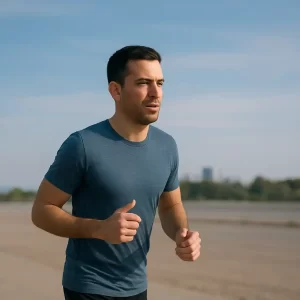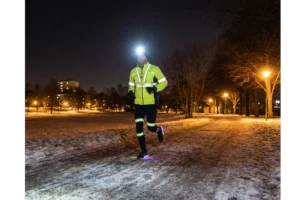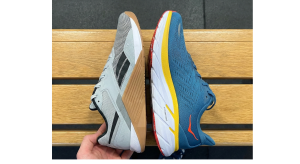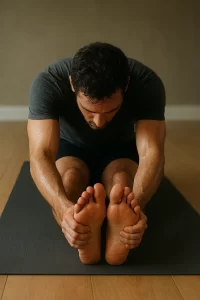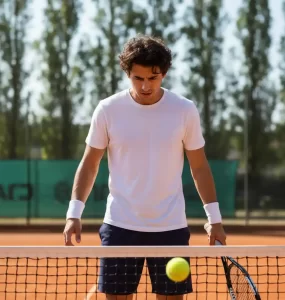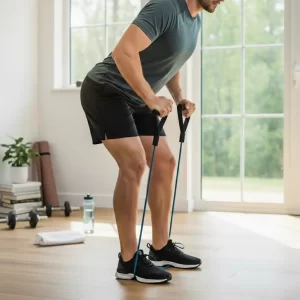START
RUNNING
Running is a great way to improve your physical and mental health. It is a cardio exercise that helps lose calories and makes your body stronger.
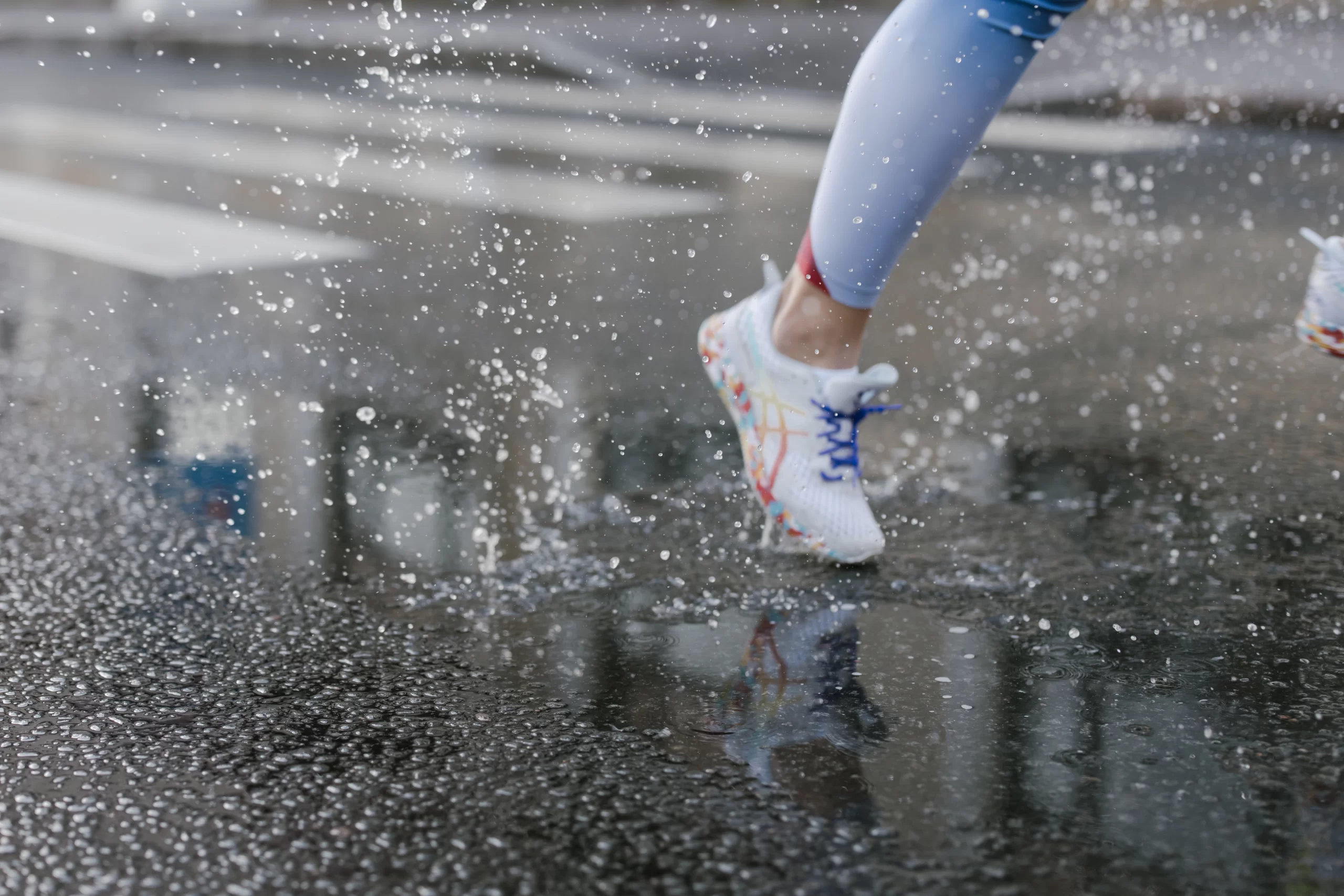
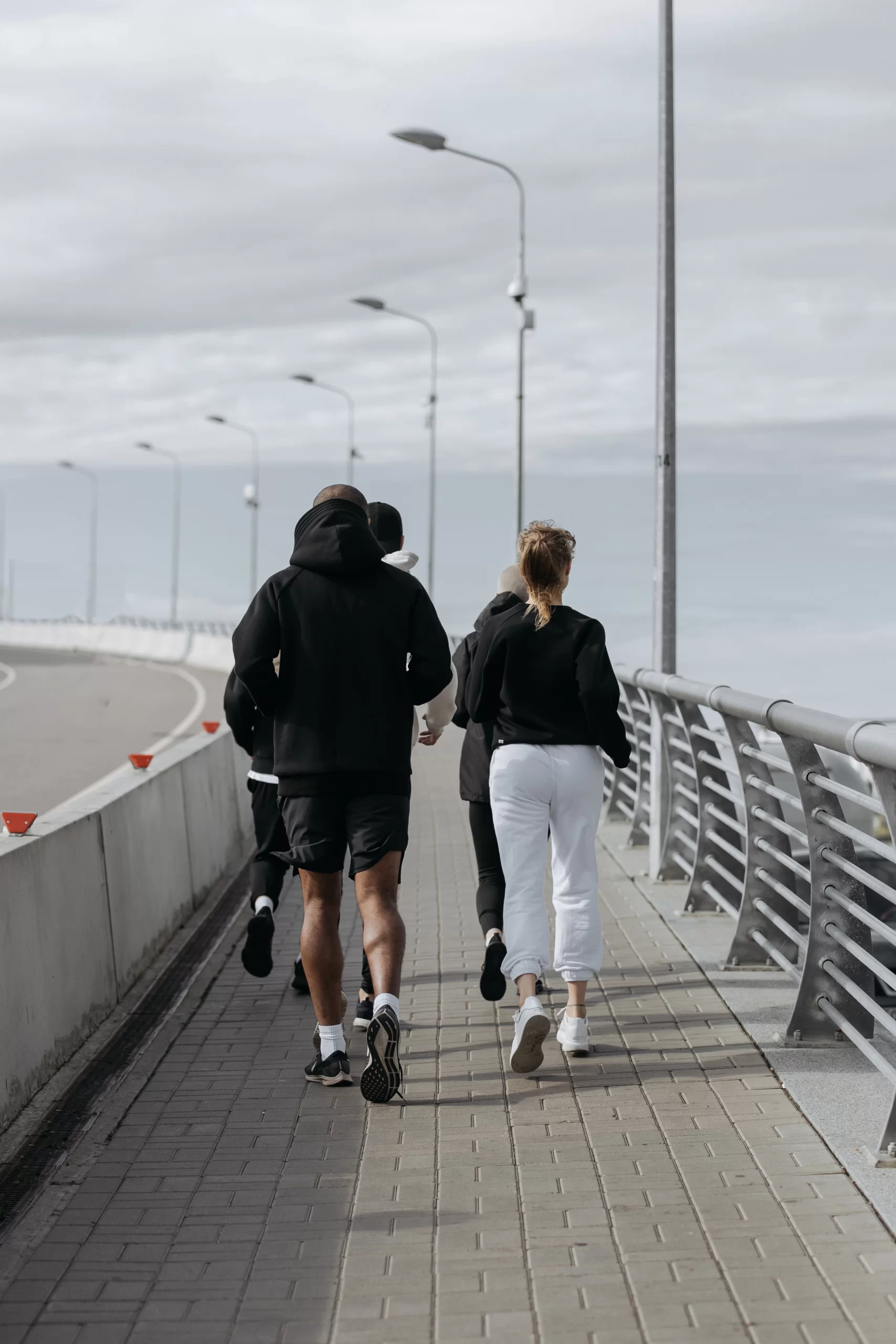
TIPS TO START
- Do not Run – Jog!
Start with brisk walking and ease into jogging. Control your pace to avoid burnout. - Control your breathing:
If you get winded, pause and walk. Learn to pace and breathe efficiently. - Alternate walking and running:
Start with 1-minute walk + 1-minute jog. Gradually increase jog time. - Set a goal: Track your distance, pace, or prepare for a race to stay motivated.
- Don’t try to imitate others: Avoid signing up for a marathon just because it’s trendy. Instead, build up to it gradually—conquer 5K, 10K, and a half-marathon (21K) first.
- Warm up and cool down: Stretch before and after. Prevent injury with dynamic and static stretches.
- Listen to your body: Stay hydrated, take breaks, and avoid overexertion.
- Nutrition is important: For longer distances (above 10K) nutrition is important since your body will need extra energy.
Have fun: Enjoy the run — it clears your mind and lifts your mood!
BASIC EQUIPMENT
- Shoes: Investing in a good pair of running shoes is important to help support your feet and prevent injury. Look for shoes that are designed specifically for running and that fit well.
- Socks: Wearing moisture-wicking socks can help to keep your feet dry and prevent blisters.
- Clothes: Wear lightweight, breathable clothing that allows your skin to breathe and helps to regulate your body temperature. Avoid wearing cotton, as it tends to hold onto sweat and can cause chafing.
- Hat or visor: If you are running in the sun, a hat or visor can help to protect your face and eyes from the sun’s rays.
- Water bottle or hydration pack: If you are planning on running for more than 30 minutes, it is important to stay hydrated. A water bottle or hydration pack can help to ensure that you have access to water during your run.
- Watch or fitness tracker: A watch or fitness tracker can be helpful for tracking your distance, pace, and other metrics.
- Reflective gear: If you are running in low light conditions, reflective gear can help to make you more visible to other runners and pedestrians.
- Headphones or music player: If you like to listen to music while running, a good pair of headphones or a music player can help to keep you motivated and entertained.
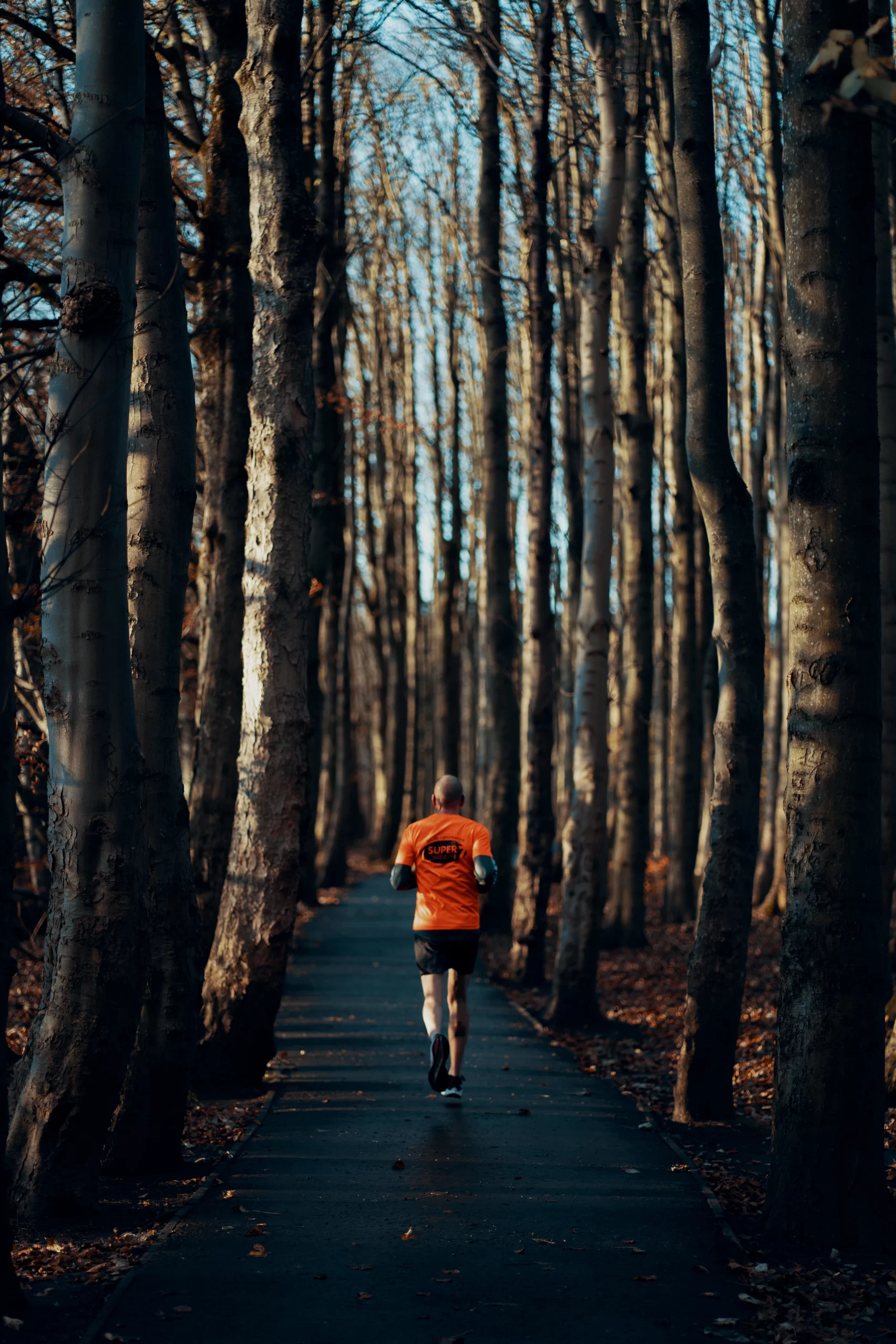
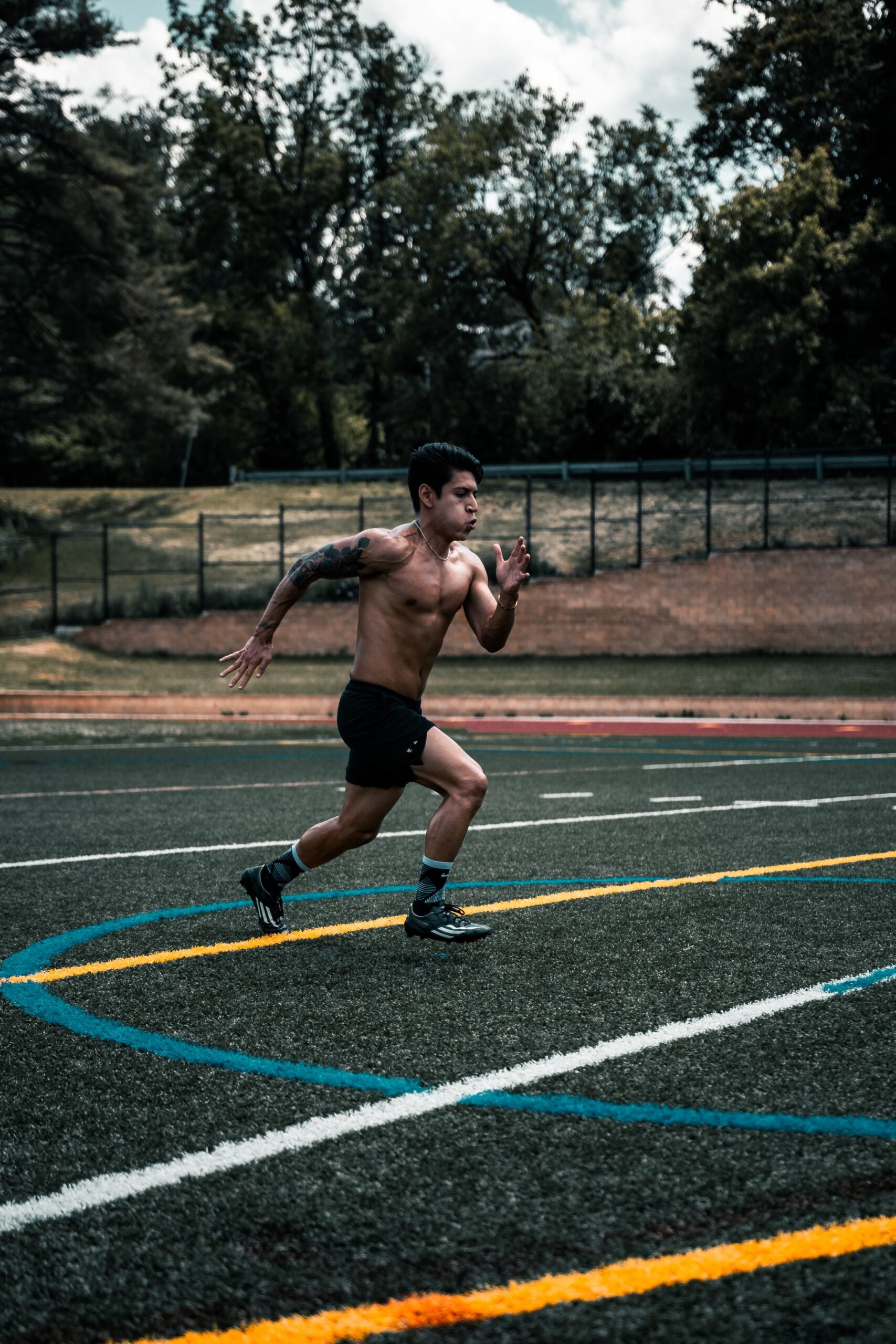
MAIN MUSCLES
Running primarily exercises the muscles in the lower body, including the:
- Quadriceps: Front of the thigh, responsible for extending the knee and flexing the hip.
- Hamstrings: Back of the thigh, responsible for flexing the knee and extending the hip.
- Gluteal muscles: Buttocks, for extending the hip and rotating the leg outward.
- Calves: Lower leg muscles, used for pushing off and ankle flexion.
Running also engages your core muscles, including the:
- Abdominals: Maintain posture and breathing control.
- Obliques: Aid in rotation and lateral movement.
- Lower back muscles: Provide spinal stability and posture control.
COMMON INJURIES
- Runner’s knee: Pain around the kneecap caused by overuse or misalignment.
- Shin splints: Pain along the front of the lower leg, common in new or returning runners.
- Plantar fasciitis: Heel or arch pain from strain on the plantar fascia ligament.
- Ankle sprains: Caused by twisting the ankle during unstable footing or fatigue.
- Stress fractures: Tiny bone cracks due to repetitive impact and overtraining.
Most running injuries can be avoided by listening to your body, progressing gradually, and using proper gear and form.
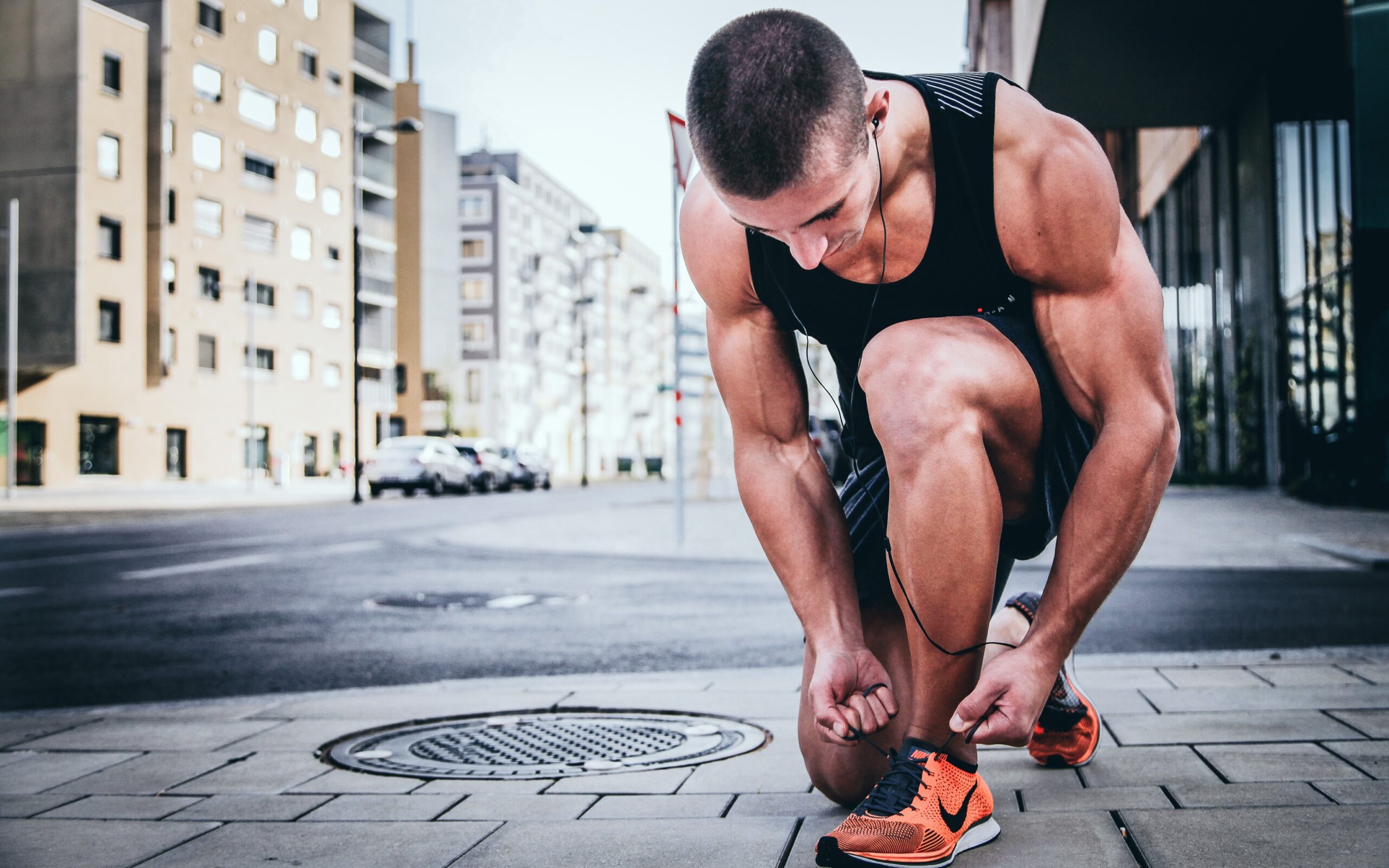
Running Is Simple. The Internet Is Not.
You’ve decided to start running. Maybe you’ve seen the relentless online enthusiasm for its life-changing benefits, or perhaps you were inspired watching people crush races, from a local 5K to a full-blown Marathon. You wanted a piece of that feeling, so you laced up your shoes and hit the road.…
Read more →
Why Running Twice a Day Can Replace a Long Run in Extreme Heat
Running during the summer months brings its own set of challenges—longer daylight hours, beautiful sunrises and sunsets, but also dangerously high temperatures. For runners training through the season, the traditional long run can become a health risk rather than a fitness boost. When the mercury climbs, smart runners adapt—and one…
Read more →
Why Running Slow is the Fastest Way to Get Faster
The Counterintuitive Secret Every New Runner Should Know If you’re new to running or just getting serious about fitness, you might think the best way to get faster is to push your pace every time you lace up. But here’s a surprising truth: slowing down is actually the key to…
Read more →
The Secret to Running Without Getting Tired: Nose Breathing vs. Mouth Breathing
When I first started running and tried to control my pace, I noticed something interesting. Even though I could maintain a steady speed and my legs felt fine, my lungs and heart didn’t seem to agree. I would hit a wall pretty quickly and end up out of breath. So,…
Read more →
How to Run Like a Kid Again: Rediscover the Joy of Movement
When I think back to my childhood, running was like a breeze—chasing friends, playing tag, feeling the wind in my hair. There were no fancy training plans, no GPS watches, no pressure to hit a certain pace. Running was just pure joy and carefree fun. But somewhere along the way,…
Read more →
Running with A Dog: Tips for Beginners
Thinking about hitting the trail with your four-legged friend? Running with a dog is one of the most rewarding ways to stay fit and bond with your pup. But let’s face it: without the right preparation, it can quickly turn into a comedy of errors (cue the leash tangles and…
Read more →
Night Running Safety Guide: Essential Gear & Tips for Winter
Winter is here, and with it comes shorter days and longer nights. For many of us with 9-to-5 jobs, that often means our only time to exercise is when the sun is down. Running at night can be incredibly peaceful—the streets are quieter, and the air is crisp—but it does…
Read more →
How to Choose Sports Shoes
When starting a new sport, one of the main issues you face is buying gear—especially the footwear. Walking into a sports store and staring at a wall of 500 different shoes that all look exactly the same but cost wildly different prices can cause serious confusion and anxiety. However, if…
Read more →
How Temperature Affects Your Flexibility
I bet you have heard about hot yoga, a huge trend that has been aroynd for years, promising deeper stretches and greater flexibility thanks to those super-heated rooms. But does increasing the temperature actually lead to better, long-term flexibility gains? Let’s examine how the science to see how different room…
Read more →
The Mental Game: A Beginner’s Guide to Handling Frustration
So, you’ve started playing tennis. You’ve probably realized by now that the ads showing smiling people hitting perfect, effortless shots are misleading. The reality is much closer to clips of top players smashing their rackets in frustration. You’re beginning to understand why—this sport involves a lot of swinging and missing,…
Read more →
Running Is Simple. The Internet Is Not.
You’ve decided to start running. Maybe you’ve seen the relentless online enthusiasm for its life-changing benefits, or perhaps you were inspired watching people crush races, from a local 5K to a full-blown Marathon. You wanted a piece of that feeling, so you laced up your shoes and hit the road.…
Read more →
The 10-Minute Strength Solution: Short Workouts for Beginners
When you think about starting strength training, the first image that might come to mind is spending hours in a gym surrounded by heavy weights and complicated machines. For beginners, that picture can feel overwhelming and a little discouraging. The truth is, you don’t need long, exhausting workouts to see…
Read more →



